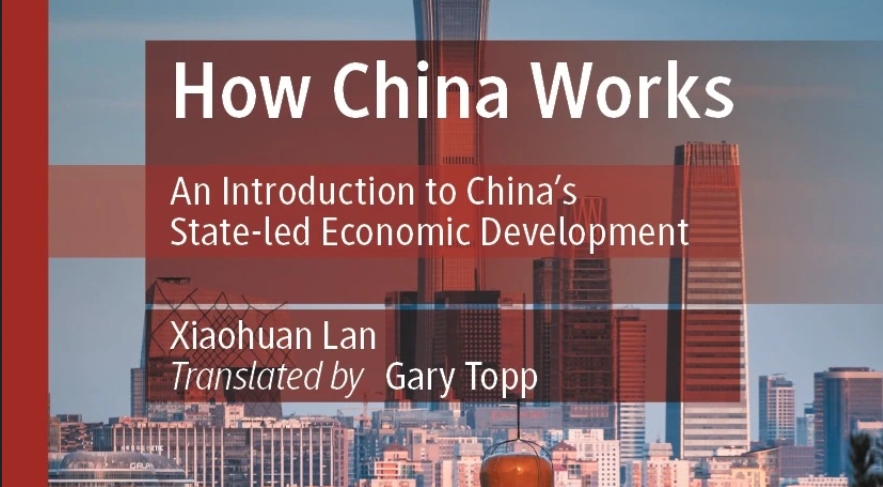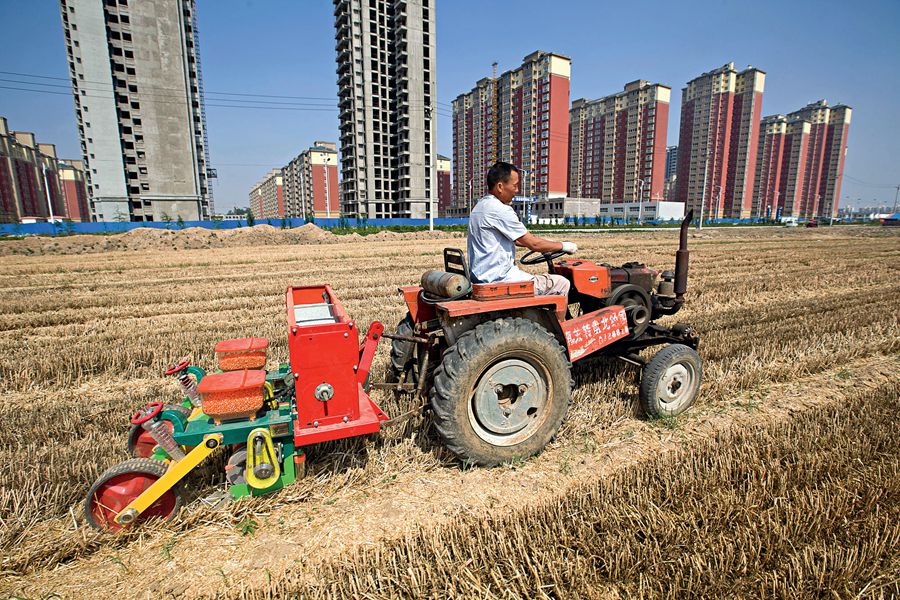Views: 97
How does the government work in China?
by Jan Jonckheere • 31 August 2024

This article by Jan Jonckheere was first published in Dutch at Chinasquare. This is a translation in English:
The book ‘How China works?’ explains how the visible hand of the government steers economic development. The basis is the relationship between income and expenditure of local governments, which is discussed in more detail later, including the basic conditions of urbanization and industrialization that are different from those in the West.
The first part of the book deals with the micro-economic environment, more specifically the role and responsibility of local government. Local economic development in China is the responsibility of local government. Below the province level is that of prefectures and prefecture-level cities. Below that are the cantonal cities, urban districts and (rural) cantons and at the very bottom are the towns, (municipalities) and townships (districts).
In the big cities there is a tendency to transform the rural cantons under their supervision into urban districts. In passing we learn that there are 15 types of government documents in China. These include ‘Decisions’ and ‘Orders’ which must be strictly implemented by lower levels. But in addition there are documents that can be dealt with relatively easily such as ‘Advices’ and ‘Notices’ and documents with less informative content such as ‘Letters’ and ‘Minutes’.
Financial reforms
The second chapter, which deals with finances, deals extensively with the fiscal reform of 1994. Before that, local governments received the vast majority of tax revenues, after that they went to the government. Because local governments received less taxes, they started to convert more land into cash in compensation. The cities own the urban lands; in rural areas, this is the local village community. In 2002, the government decreed that bidding for a plot of land had to be done by public auction. In 2003, the sale of land rights already accounted for 55% of the income of the lower governments and by 2010 this would be 68%. The prices of residential land in particular rose sharply, more than those of industrial land. There is a transfer system of funds from the national treasury to less wealthy local areas. Central and western areas received 80% of this.
The third chapter deals with government investments, financing and debt. Because local governments were not allowed to borrow from banks or issue bonds before 2015, they had to rely on special financing vehicles. In 2008, there were 3,000 such vehicles and in 2009 the number had already risen to more than 8,000, 60% of which were at the cantonal level. After 2015, the financial system was reformed. Local governments were now allowed to issue bonds, albeit with lower interest rates and a longer write-off period. Local politicians could now also be held accountable in the event of excessive borrowing.
The fourth chapter deals with the role of government in industrialisation. This begins with two extensive and detailed stories that ultimately, after much trial and error, ended successfully: namely, that of the flat screen manufacturer BOE and that of the solar panel sector and government subsidies. The competition between various local governments to attract the same factories is striking. The chapter also explains the role of government support funds.
Urbanization

The second part of the book, which deals with the macroeconomic consequences, first discusses urbanization and the imbalances that come with it. The house price and the supply/demand of land are crucial here. Since housing was commercialized in 1998, the price rose 4.2 times in the next two decades. From 2005 to 2015, the price quadrupled in Beijing, Shanghai, Guangzhou and Shenzhen. The reason lies in an imbalance between the supply and demand of building land.
In large cities with a high population influx, the supply of building land cannot keep up with the influx. Incidentally, China applies a strict quota policy for building land, so that there is enough agricultural land left to feed the population. With the higher house prices, the total value of mortgages increased steadily, so that the debt burden of households tripled. In 2019, 60% of households had a debt ratio that was 1.6 times the annual household income. Moreover, in 2018, urban income was 2.7 times that of rural residents.
Since 2015, a new round of reforms concerning the purchase of agricultural land, access to the market for collectively owned building land and institutions related to farm housing have been launched in 33 pilot cantons and cities. The book discusses these pilot projects, as well as the intention to gradually eliminate the distinction between urban and rural registration. This chapter also addresses inequality, as in 2019, the top 20% of the population earned 48% of the total income, while the bottom 20% earned only 4%.
Debt
Chapter 6 is entirely devoted to the debt problem. At the end of 2018, China’s total debt-to-GDP ratio was 259%, of which 54% was household debt, 51% was government debt, and 154% was corporate debt. Of the government debt, 17% came from the central government and 34% from local governments. The seventh and penultimate chapter deals with international imbalances. The accession to the WTO was a success, and in 2019, 30% of exports consisted of high-tech goods, so that China now accounts for about a quarter of all high-tech products manufactured worldwide.
However, behind this great success lie two problems. First, China’s unbalanced internal economic structure, with an emphasis on production and investment, but relatively little attention to consumption or the quality of life of its residents. As a result, domestic consumption is insufficient compared to the enormous production capacity, so that a large part of the products have to be exported. This leads to the second problem: unstable foreign demand and trade conflicts. This chapter specifically discusses the US-China trade war.
The final chapter deals with the theme of ‘Government and Economic Development’. The first section discusses the competition among Chinese local governments to attract investment. The second section discusses government capacity building and its changing role in the Chinese economy. This provides an overview of the advantages and disadvantages of a production-oriented policy and explains what is needed to move to a service-oriented policy. The third section summarizes another important perspective of the book: the distinction between the economic development process and development goals.
The merit of this book lies in the fact that it specifically explains how Chinese industrialization and urbanization differ from Western ones due to three factors: collective land ownership in rural areas, state land ownership in cities, and the hukou/household registration system. As a result, China’s industrialization is linked to the development of local businesses, while China’s urbanization is inextricably linked to land ownership.
Xiaohuan Lan, How China works? An Introduction to China’s state-led Economic Development Palgrave Macmillan, 346 p.
Another review of this same book:
How China Works
An Introduction to China’s State-led Economic Development
book review by Jia Xiaochuan The East is Red here.
Thank you for reading! We’d love to hear your thoughts—please share your comments below and join the conversation with our community!


